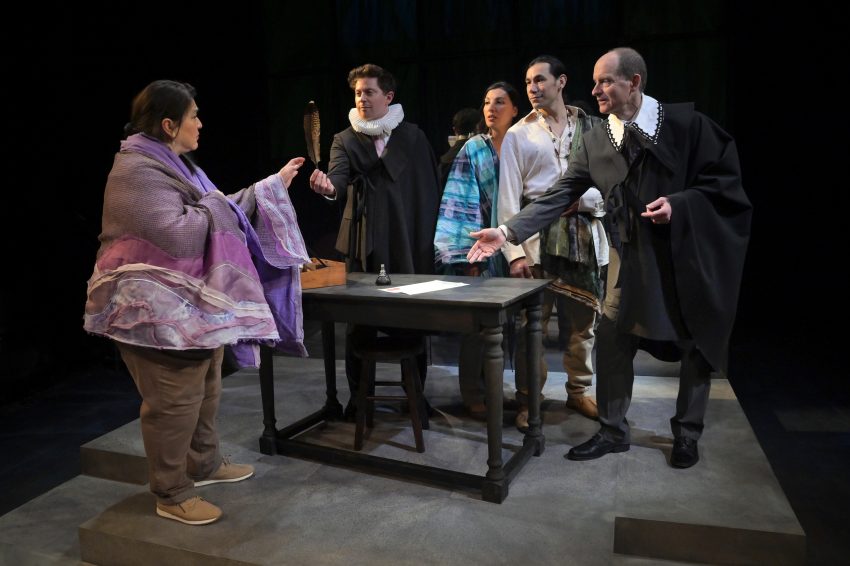
“Manahatta” Reveals Native American Truths—at Aurora
Mary Kathryn Nagle Links Colonial Greed & Wall Street Wolves
by Robert M. Gardner
In this time of deep division, “Manahatta” points a direction for America. It is refreshing to see a play about Native Americans that portrays them honestly. As an anthropologist who has studied Great Plains’ cultures, I have witnessed the continuing oppression of Native Americans.
Mary Kathryn Nagle recounts the devastating removal of Native American children to schools like the Carlisle Indian School, where they were forcibly deprived of their language and culture. Her characters are tremendously moving.
The Lenape tribe lived on Manahatta Island and Nagle tells two Lenape stories, widely separated in time. In the 1600s, they were swindled by Dutch settlers. Then, in 2008, they were deceived by Wall Street brokers. Nagle’s dramatization of “trade” between cultures is enlightening and disturbing. Aided by Asa Benally’s lush, fluid costumes and Deanna L. Zibello’s ever-changing mirrored wall, the Aurora production enriches her story.
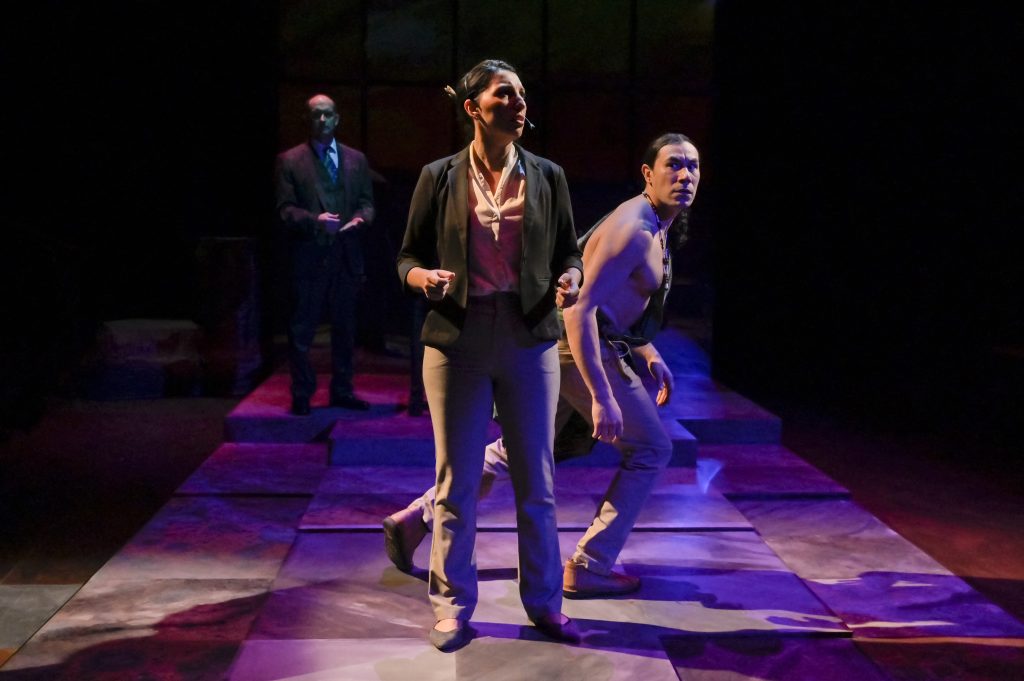
In early times, young Le-le-wa’-you (passionate Livia Gomes DeMarchi) traded furs with the Dutch. Flashing forward, DeMarchi plays Jane Snake, a Stanford-educated Lenape whose financial wizardry lands her a job at Lehman Brothers. The price: leaving her debt-loaded Lenape family in Oklahoma. At times, the scenes end abruptly, leaving us wishing for more.
The actor Ixtlán plays her Lenape partner: both 1600s Se-ket-tu-may-qua and modern-day Luke. In the two eras, Ixtlán represents intelligence and resourcefulness, filling the roles admirably.
Max Forman-Mullin doubles brilliantly as settler Jakob and high-powered, youthful financier Joe. As Jakob, he expresses ethical qualms about the demands of his rapacious boss Peter Minuit (electric Anthony Fusco). When Jakob naively asks Minuit how many furs to buy, Minuit replies, “There’s no such thing as enough in the New World.”
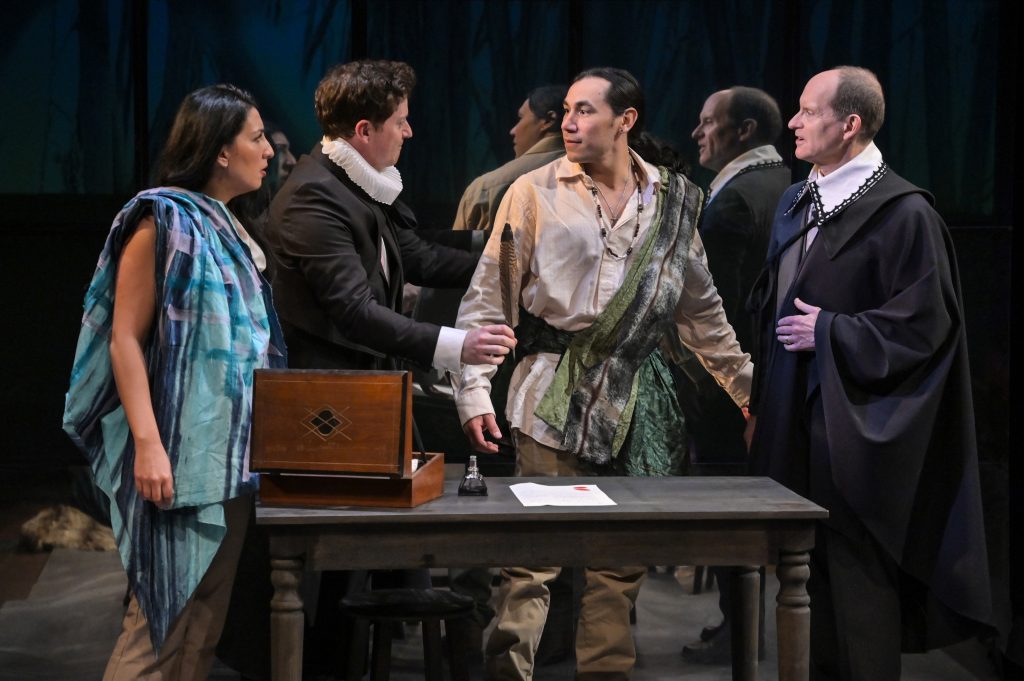
Fusco also plays devious Dick, a 21st century Wall Street wolf, who loses millions. But he has no feelings for homeowners, like Jane’s mother, who have fallen for his “adjustable” loans.
Nagle uses time-travel to expose generational trickery. The Lenape have no concept of “ownership,” resulting in a touching scene where the Dutch trick the Lenape out of their beloved Manahatta. The island is stolen by lies, murder, and massacre.
As Jane’s sister Toosh-ki-pas-kwis-i/Debra, Oogie Puh delivers the goods for tradition. As intrusive priest Michaelus and slippery banker Michael, Victor Talmadge brings subtlety to parallel roles.
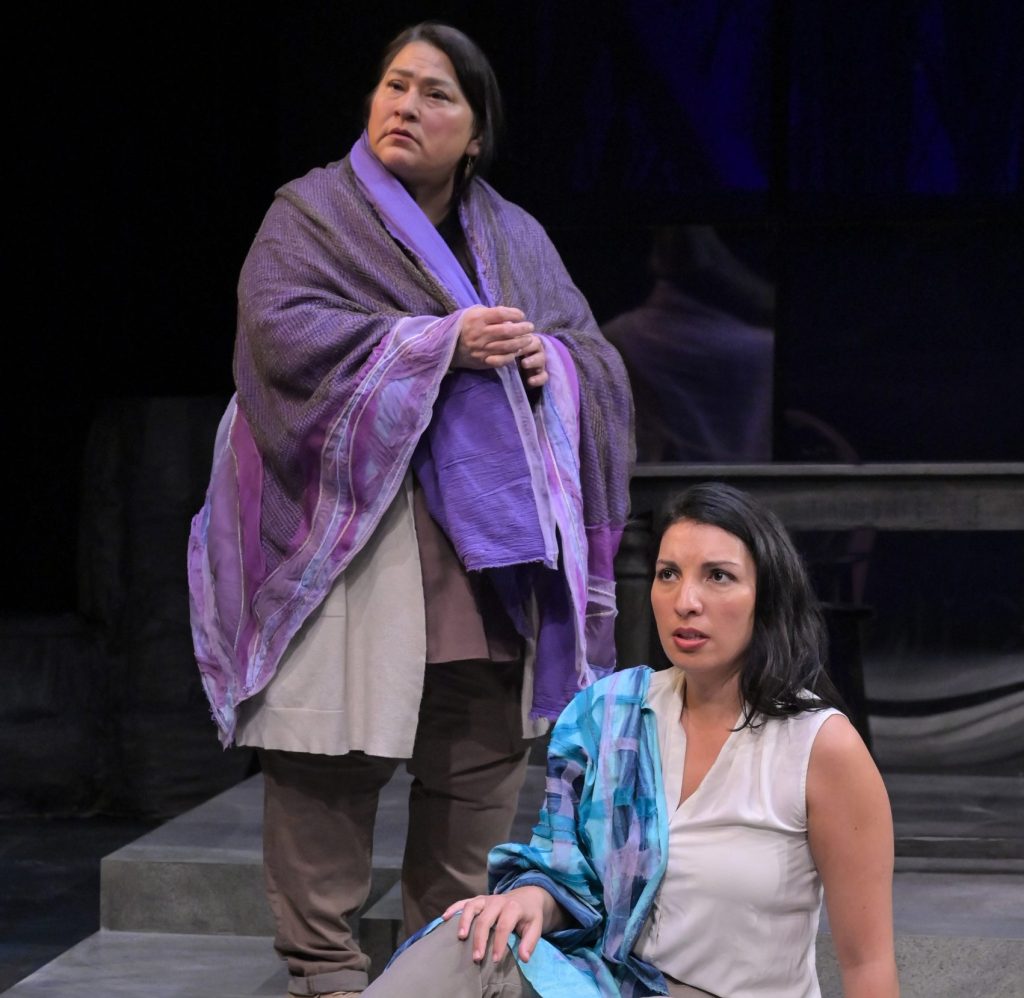
Linda Amayo-Hassan beautifully depicts a Lenape mother, as well as Jane’s mom Bobbie. In both roles, she summons Lenape spiritual beliefs in home and tradition, while facing violent uprooting. As the glue holding the family together, Amayo-Hassan displays stoicism and resilience. Bobbie explains: “We’re Lenape. We’re never homeless. So, they try. But they’ll never really take our home. Every time they make us leave; we carry our home with us.”
“Manahatta” explores Lenape life, opening a path to learning more about Native American cultures. Even now, the cruel concept of “Manifest Destiny” persists at Bears Ears in Arizona or the Bakken in North Dakota. Nagle offers a long-overdue correction for Native rights to life and to nature. She takes us on a graceful journey into American history. “Manahatta” is an exciting and thought-provoking drama.
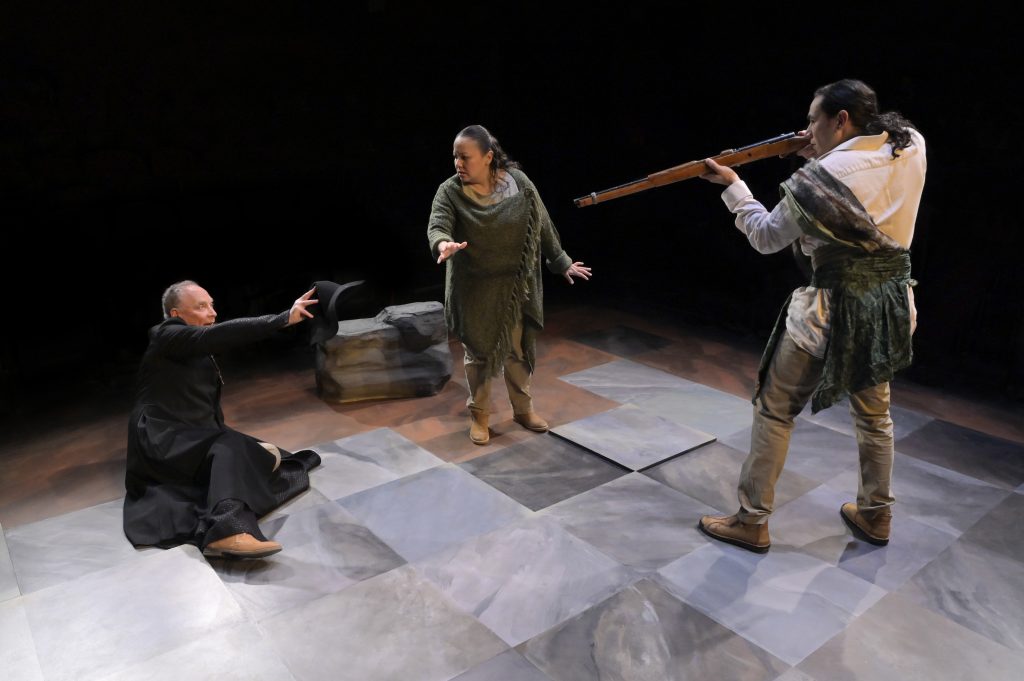
“Manahatta” by Mary Kathryn Nagle, directed by Shannon R. Davis, sound designed by James Ard, costumes designed by Asa Benally, lighting designed by Ray Oppenheimer, video designed by Wolfgang Wachalovsky, scenic design by Deanna L. Zibello, at Aurora Theatre, Berkeley. Info: auroratheatre.org – to March 10, 2024.
Cast: Linda Amayo-Hassan, Livia Gomes DeMarchi, Max Forman-Mullin, Anthony Fusco, Ixtlán, Oogie Push, and Victor Talmadge.
Banner photo: Linda Amayo-Hassan, Max Forman-Mullin, Livia Gomes Demarchi, Ixtlán, & Anthony Fusco. Photos by Kevin Berne